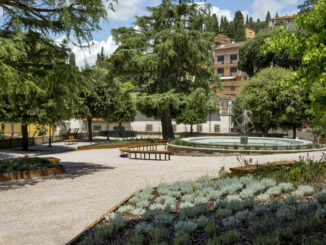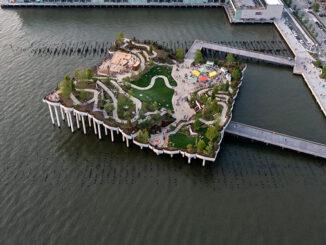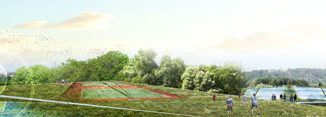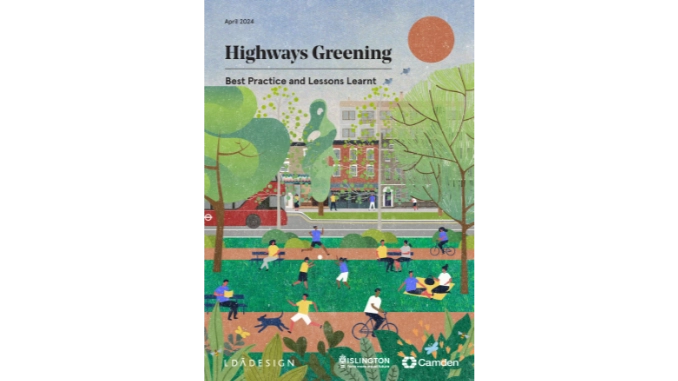
A new report published by the London Boroughs of Camden and Islington and authored by LDA Design finds that climate resilience and social equity are driving best practice in the redesign of streets and highways, making them safer and healthier.
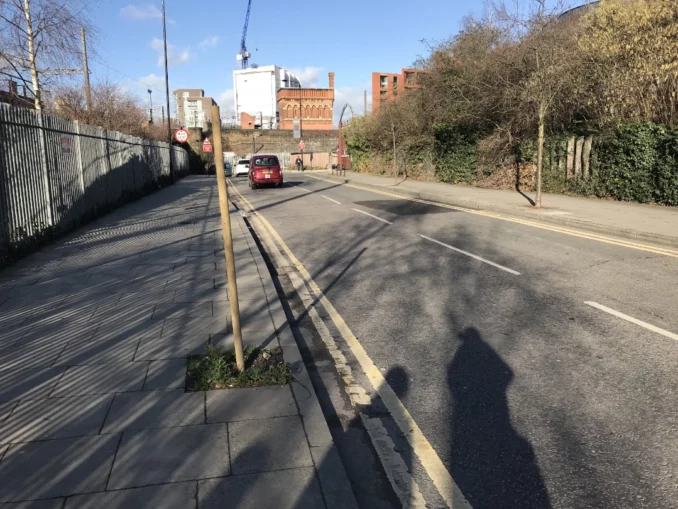
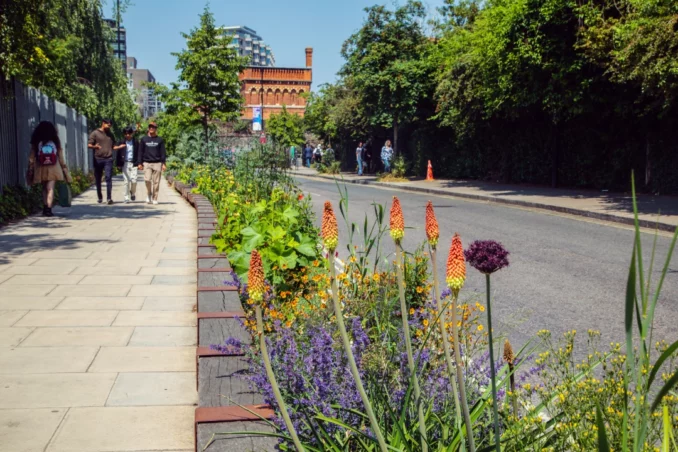
Streets and highways make up the vast majority of the urban public realm, and yet, for decades, traffic movement and vehicle parking have been prioritised above the quality of place or wellbeing. ‘Highways Greening – Best Practice and Lessons Learnt’ shows the tide is turning.
It draws on Camden and Islington’s experience of jointly delivering a Highways Greening Accelerator programme, which targets areas of greatest community need, and highlights best practice in the planning, design and delivery of green infrastructure on highways and streets in the UK and in Vancouver, Antwerp and Lyon. The report was supported by the Department for Housing & Communities, National Trust, Heritage Fund and the Mayor of London.
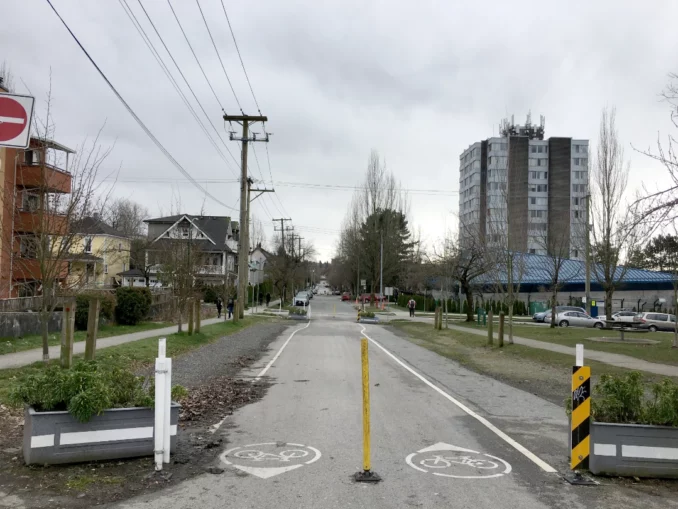
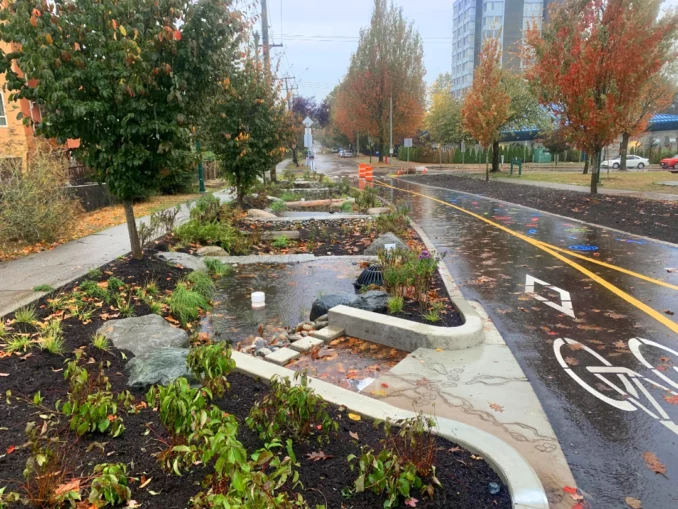
Projects using nature-based solutions to secure flood resilience include the creation of garden streets in districts with poor access to green space and where residents are vulnerable to impacts from climate breakdown such as the urban heat island effect, and local flooding. Green infrastructure is also being used to futureproof the drainage network by minimising surface run-off entering the combined sewer, with one greening scheme even freeing sufficient capacity to allow plans for much-needed affordable housing to progress.
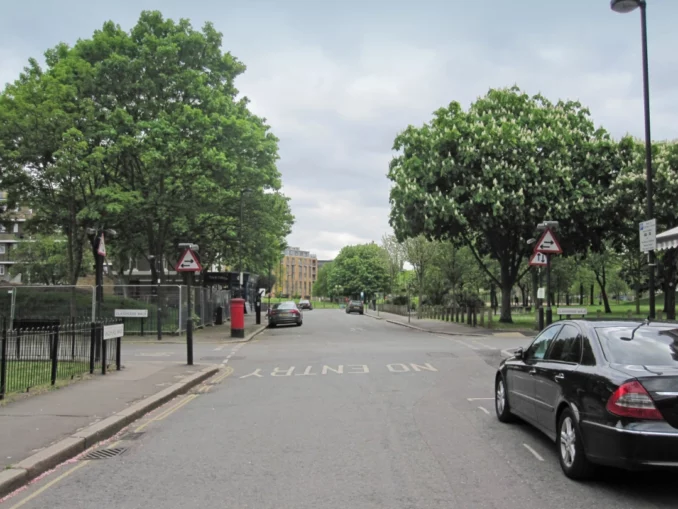
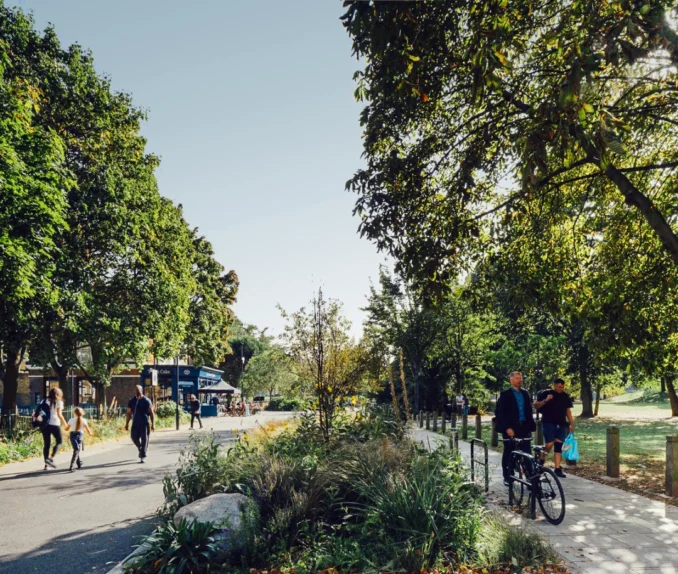
Highways across the UK have traditionally been designed back to front, maximising space for the movement and parking of vehicles and so minimising the amount of space given to other uses. Air pollution is a leading cause of health complications and mortality and especially impacts lower-income groups. The report describes the approaches and strategies that have enabled local authorities and others to improve air quality through transforming highway land from grey to green. For example, there is a lot of ‘baggy space’ at the side of roads which is no longer used for vehicles. Where bioretention rain gardens are retrofitted into former carriageway space on busy roads, they provide a visual and pollution buffer between pedestrians and traffic.
“This report aims to educate and inspire those involved in planning, designing, and delivering public realm. Even small street greening projects can provide significant benefits. It is also clear that when projects are interdisciplinary and prioritise the community, they maximise benefits in biodiversity, flood resilience, active travel, play and sociability.”
Sophie Thompson, Director at LDA Design and Public Realm lead
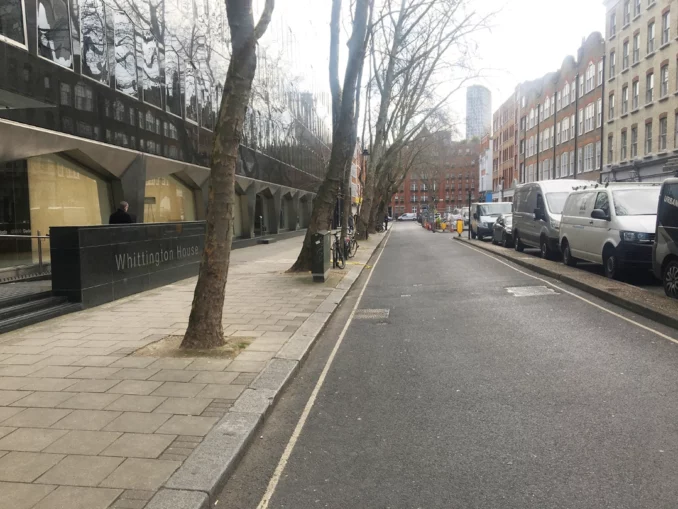
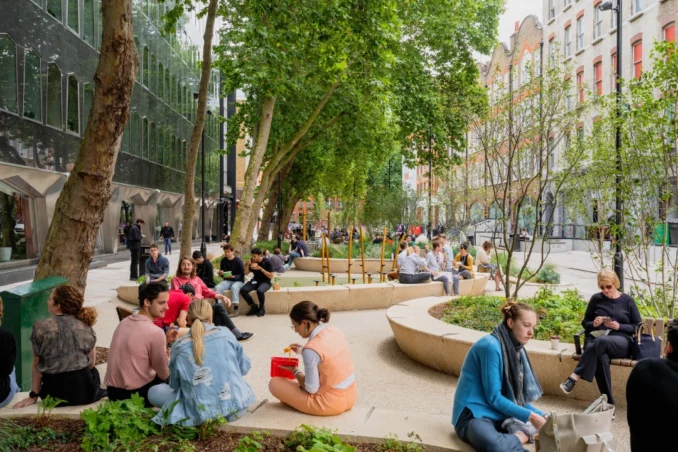
The report demonstrates the value of bold ambition, collective action, and bringing expertise and different specialisms together in a team, as well as providing new skills and training. The projects in the report are at a variety of scales. Small projects can prove catalysts for transformation. Large multi-functional spaces include a ‘lost’ river released from its concrete channel with an associated greening programme that created rain gardens designed to meet TfL Healthy Streets standard.

